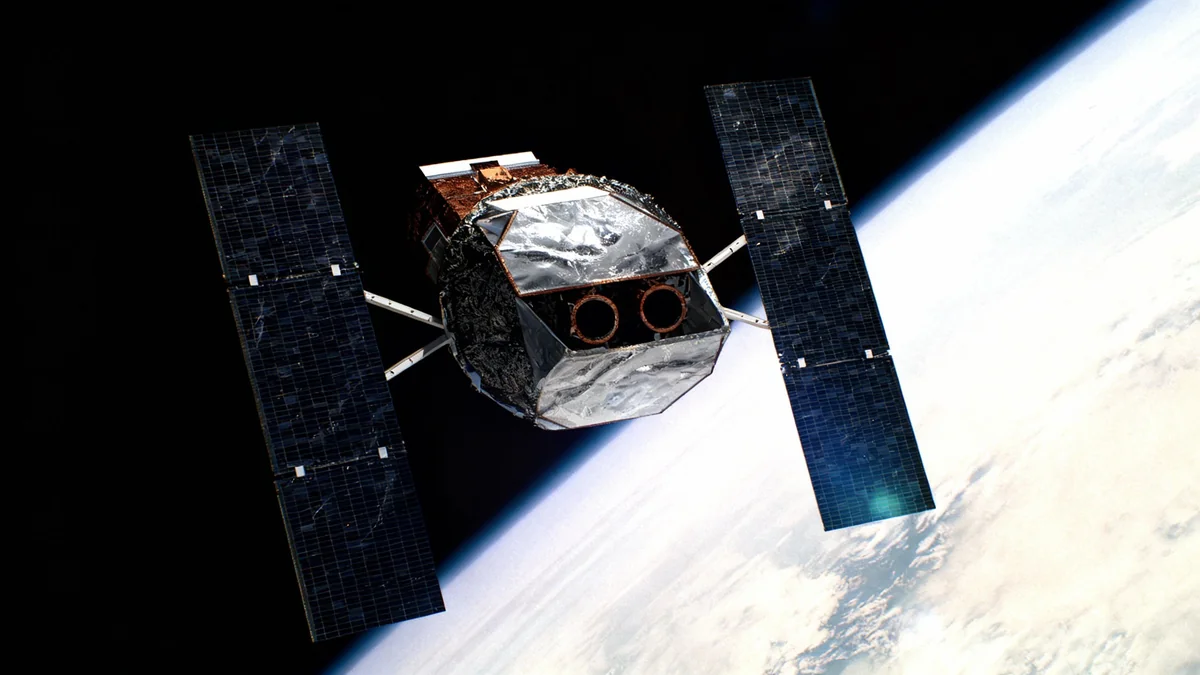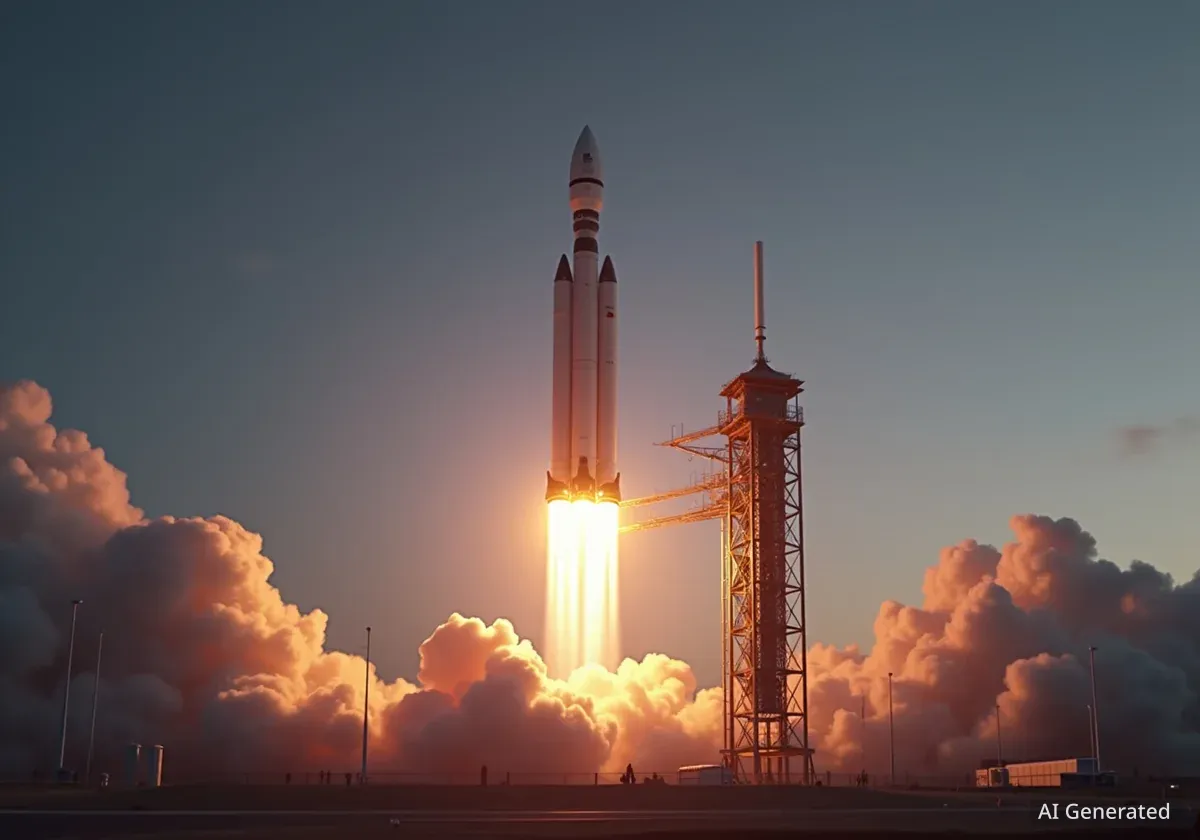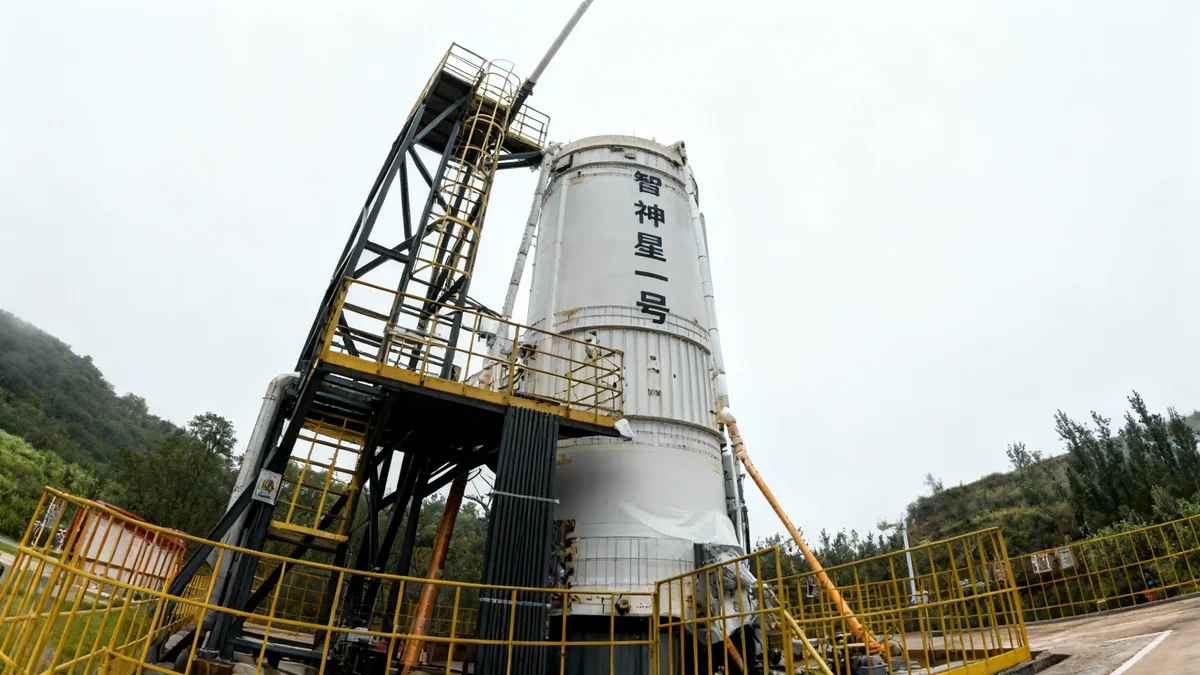The global space economy is expanding at an unprecedented rate, driven by technological innovation and increasing investment from both governments and private companies. The total value of space-related activities more than doubled between 2007 and 2022, with some projections suggesting the market could reach nearly $800 billion by 2027. This growth, however, brings significant challenges that must be addressed to ensure sustainable development.
Increased orbital congestion, a growing field of space debris, and rising geopolitical tensions are creating a complex environment for operators. As thousands of new satellites are launched, the need for international cooperation on space traffic management and clear rules of conduct is becoming increasingly urgent for the long-term viability of commercial and scientific activities in orbit.
Key Takeaways
- The global space economy's value more than doubled from 2007 to 2022 and is projected to approach $800 billion by 2027.
- Over 11,000 active satellites currently orbit Earth, with estimates suggesting this number could reach 20,000 by 2030, increasing collision risks.
- Key challenges include the lack of modern international governance, the proliferation of space debris, and growing geopolitical competition.
- Public-private partnerships are essential for driving innovation in areas like in-orbit manufacturing and debris removal.
- Experts recommend strengthening international agreements and establishing clear norms of behavior to ensure the sustainable and safe use of space.
The New Era of Space Commerce
The modern space industry is defined by a powerful synergy between government agencies and commercial enterprises. This collaborative model is accelerating innovation and lowering costs, opening up space to a wider range of activities beyond traditional satellite communications and Earth observation.
Private companies, building on decades of government-funded research, now provide critical services, including launching astronauts and deploying national security payloads. This shift allows government agencies to focus on more ambitious, long-term scientific and exploration goals while leveraging the efficiency of the private sector.
Emerging Markets in Orbit
The industry is moving beyond familiar sectors into new frontiers. Key growth areas include in-orbit servicing, assembly, and manufacturing (ISAM). These technologies could one day allow for the construction of massive telescopes or manufacturing facilities directly in space, revolutionizing science and industry. Other emerging markets include space traffic management and active debris remediation, both born from the necessity of managing an increasingly crowded orbital environment.
This expansion is creating entirely new economic opportunities. From agriculture and finance to transportation and insurance, numerous terrestrial industries now rely on space-based technologies for data, communication, and navigation. The maturation of innovations like large-scale launch vehicles and sophisticated imaging satellites promises to deepen this dependence and fuel further economic growth.
Growing Pains in a Crowded Sky
While the economic outlook is bright, the rapid expansion of activity in orbit has created significant operational and strategic challenges. The very success of the industry is generating risks that could undermine its future if left unmanaged.
The Challenge of Orbital Debris
One of the most pressing issues is the proliferation of space debris. Decades of launches have left a trail of defunct satellites, spent rocket stages, and fragments from collisions. Currently, tens of thousands of pieces of trackable debris orbit the Earth, with more than half concentrated in low Earth orbit (LEO)—the same region where most commercial activity takes place.
A Junkyard Above
There are currently over 11,000 active satellites in orbit. However, they are joined by tens of thousands of pieces of trackable debris. This orbital junk poses a constant threat to operational spacecraft, including vital communication and navigation systems that people rely on every day.
Each piece of debris, no matter how small, travels at incredibly high speeds, turning it into a dangerous projectile. A collision could disable a critical satellite, creating even more debris and setting off a chain reaction that could render certain orbits unusable for generations. Addressing this threat is paramount for the safety and sustainability of all space operations.
Outdated Rules for a New Frontier
The foundational principles of international space law were established in treaties from the 1960s and 1970s, long before the rise of the commercial space industry. While these agreements provide a basic framework, they lack the specificity needed to govern modern activities like large satellite constellations, commercial resource extraction, and complex orbital maneuvers.
A critical gap exists in space traffic management. With predictions of up to 20,000 satellites in orbit by 2030, the risk of collisions and radio frequency interference is growing exponentially. There is no universally accepted international body to coordinate orbital traffic, leaving operators to manage collision avoidance on an ad-hoc basis.
Geopolitical Tensions Rise
Space has always been an arena for strategic competition, providing nations with vital military capabilities for communication, intelligence, and navigation. As governments increasingly rely on commercial partners to develop and deploy these capabilities, the line between commercial and military activities can become blurred.
This dynamic creates a dual effect. On one hand, government investment in new space technologies to meet national security needs stimulates commercial innovation. On the other, the race to develop new military capabilities and capture strategic advantages in space can create international tension and increase the risk of miscalculation.
Charting a Sustainable Path Forward
To ensure the continued growth and stability of the space economy, experts argue that a concerted effort from both governments and the private sector is necessary. This involves a combination of strategic investment, international collaboration, and the development of clear behavioral norms.
Several key actions are being considered to foster a secure and prosperous future in space:
- Synergistic Investment: Governments can use public funds to support emerging technologies like debris removal and in-orbit servicing until they become commercially viable. This de-risks private investment and helps build critical infrastructure for the entire industry.
- Global Collaboration: Strengthening international commercial partnerships can spur innovation and create a foundation for developing robust global standards for space operations.
- Modernizing Governance: New international agreements are needed to address space debris and traffic management. These agreements must be inclusive and adaptable to keep pace with rapid technological change.
- Balancing Objectives: Openly promoting the economic benefits of a stable space environment can help balance the development of military capabilities with the need to protect commercial interests.
- Establishing Clear Norms: Creating clear lines of communication and established norms of behavior can help prevent misunderstandings between commercial and military operators, reducing the risk of conflict.
The future of the space industry depends on navigating these challenges effectively. By fostering collaboration and establishing clear rules for this new frontier, the global community can unlock its immense potential for scientific discovery and economic prosperity for generations to come.





